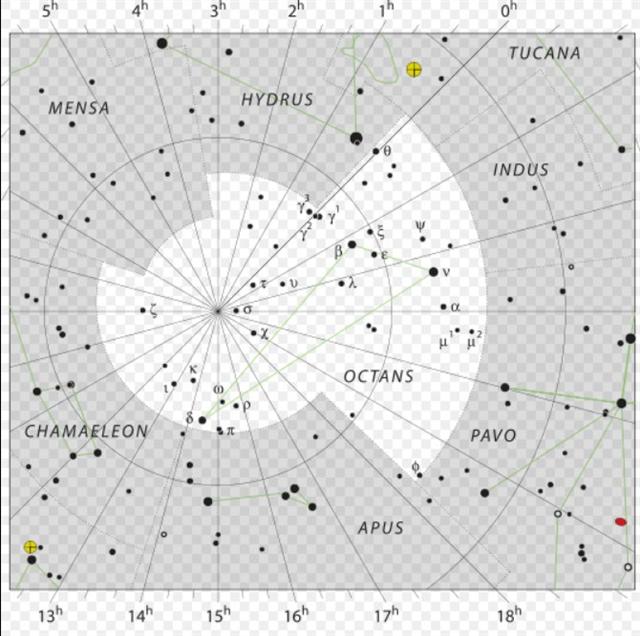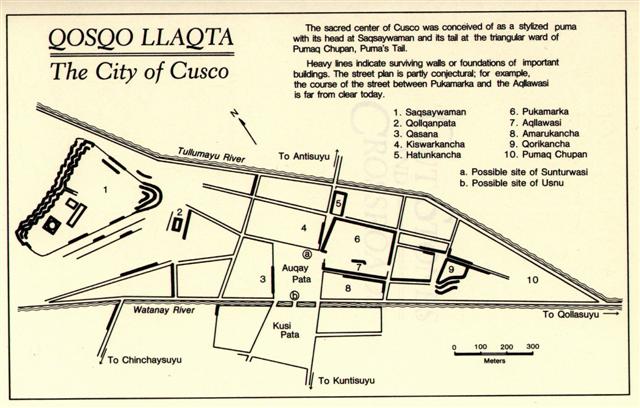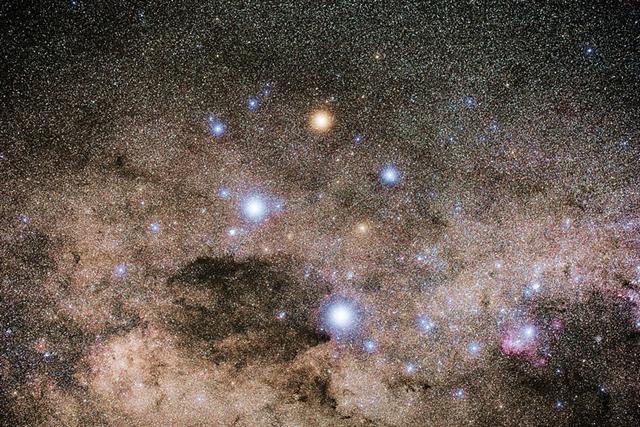171. To repeat: The star at
the south pole was Dramasa (σ Octans)
which at the time of rongorongo evidently
had risen heliacally in right ascension day
*320 and half a year (185 days) earlier was
Acubens in day *135:
 |
 |
 |
 |
 |
 |
|
Cb12-15 |
(290 = 348 - 58) |
(392 + 291 = 683) |
(260 + 424) |
Cb12-19 |
Cb12-20 |
|
tagata kua
here te maro i te puoko |
e ariki kua
iri |
te vage Rei |
tu te niu |
te hokohuki ki
te tapamea |
te hokohuki |
|
INVISIBLY CLOSE TO THE SUN NORTH
OF THE EQUATOR: |
|
γ Pyxidis (133.6) |
ζ Hydrae (134.1), ρ Cancri
(134.2), ζ Oct. (134.3), ο
Cancri (134.6), δ Pyxidis
(134.9) |
ACUBENS
= α Cancri,
TALITHA
BOREALIS = ι Ursae Majoris
(135.0), σ Cancri (135.2), ρ
Ursa Majoris (135.6) |
ν Cancri (136.0),
TALITHA AUSTRALIS
= κ Ursae Majoris
(136.1), ω Hydrae (136.8) |
9h (137.0)
σ¹ Ursa Majoris (137.0), κ
Cancri (137.3), τ Cancri
(137.4),
ALSUHAIL AL WAZN
(of the weight) = λ Velorum
(137.5), σ² Ursa Majoris
(137.6), τ Ursa Majoris (137.7),
ξ Cancri (137.8) |
κ Pyxidis (138.0), ε Pyxidis
(138.5) |
|
Aug 1 |
2 |
3 |
4 (216 = 132 + 84) |
5 |
6 |
|
ºJuly 28 |
29 (*130) |
30 |
31 |
ºAug 1 |
2 (214) |
|
'July 5 |
6 (*107) |
7 |
8 (3 * 63) |
9 (190) |
10 |
|
SOLSTICE (172) |
"June 22 (*93) |
23 |
ST JOHN'S DAY |
25 |
26 (177 = 354 / 2) |
|
MAY 29 |
30 |
31 |
JUNE 1 (84 + 68) |
2 |
3
(154 = 11 * 14) |
|
129 |
130 |
131 = 135 - 4 |
132 = 84 + 48 |
133 |
134 |
 |
|
CLOSE TO THE FULL MOON
ON EASTER ISLAND: |
|
μ
Aquarii (316.0) |
ε
Equulei (317.8) |
no star listed (318) |
21h (319.6)
ARMUS = η Capricorni
(319.0),
DORSUM
= θ Capricorni
(319.3),
TSOO
= 24 Capricorni
(319.7) |
DRAMASA
= σ Oct.,
χ
Capricorni (320.0), ν Aquarii
(320.3), γ Equulei (320.6), ο
Pavonis (320.8) |
α Oct.
(321.5), δ Equulei (321.7), φ
Capricorni (321.8) |
|
Jan 31 |
Febr 1 |
2 (398 = 84 + 314) |
3 |
4 (400) |
5 (36) |
|
ºJan 27 |
28 |
(*314 = *254 + 60) |
30 |
31 |
ºFebr 1 |
|
'Jan 4 |
5 (*290) |
6 |
7 (372 = 12 * 31) |
8 |
9 |
|
SOLSTICE (355) |
"Dec 22 |
23 |
CHRISTMAS EVE |
25 |
26 |
|
NOV 28 |
29 |
30 (*254) |
DEC 1 |
(336 = 400 - 64) |
3 |
|
312 |
313 |
314 = *254 + 60 |
315 |
316 = 336 - 20 |
317 |
 |
And 35 (= 220 - 185) right ascension days after
Dramasa (*320) was τ Octans, in day *355 - a
number corresponding to the day number
counted from January 1 up to and
including December 21
(the day for the northern winter solstice
= 12 * 29½ + 1).
And
here was also the ice cold Snowball in Andromeda
(NGC7662):

Beyond December 21 the Sun would slowly
warm up and return to life (movement) again. Te
tamaiti at niu vaha mea -
i.e. glyph 392 (number of glyphs on side
a of the tablet) + 329 (with instead of
92, as in *92 for summer solstice, changed
into 29, as in the dark night of the
Moon) - could have expressed this idea
of a slow recovery of the Sun to his senses:
|
30 |
 |
 |
 |
 |
 |
|
Cb13-26 (325) |
Cb13-27 (718) |
Cb13-28 (→ 364) |
Cb13-29 (→ 377) |
Cb13-30 (392 + 329) |
|
ku tutu te
inoino |
te hau tea |
hokohuki ki te
niu |
te tamaiti |
|
INVISIBLY CLOSE TO THE SUN NORTH
OF THE EQUATOR: |
|
Al Zubrah-9
(Lion's Mane) /
Purva Phalguni-11
ZOSMA
(Girdle) = δ Leonis
(169.2),
COXA
(Hips) = θ Leonis
(169.4) |
φ Leonis (170.0),
ALULA
(First Spring of the Gazelle) =
ξ, ν Ursae Majoris
(170.5),
LABRUM = δ Crateris
(170.6) |
σ Leonis (171.1), λ Crateris
(171.6), ι Leonis, ε Crateris
(171.9) |
γ Crateris, π Centauri (172.0),
κ Crateris (172.5), τ Leonis
(172.8)
GREDI (α Capricorni) |
ο¹ Centauri (173.8) |
|
Sept 6 (249 = 66 + 183) |
7 |
8 |
9 (*172) |
10 |
|
JULY 4 (185) |
5 |
(*107 = 472 - 365) |
7 |
8 |

... Looking
round, he saw that the whole
land would soon be aflame. So he
changed himself into a
karearea, a hawk, and tried
to soar above the flames. But
the fire pursued him there and
scorched his feathers, which
accounts for the colour of that
bird. Seeing a lake, he plunged
down into it, but found that it
was almost boiling. All the
forests then caught fire, the
land everywhere was alight, and
Maui came very near to
death. Then he called on his
ancestor Tawhiri matea
and all his offspring, to send
down rain. 'Let water be given
to quench this fire!' he cried,
and spoke the appropriate
chants. Great clouds appeared,
and Tawhiri sent down
first the small rain, and then
the lasting rain, and everything
was drenched, and the flames
went out. Even Mahuika
herself almost perished before
she could reach her place of
shelter, and her shrieks were as
loud as those of Maui
when he was scorched. The waters
rose all around her, and in this
way Mahuika was deprived
of her former power. But fire
was saved for the world. When
the waters reached her
tikitiki, or the topknot of
her head, the last seeds of fire
fled from it to the
rata
, the hinau,
the kahikatea, the
rimu, and certain other
trees. These trees would not
admit them, and so they went to
the mahoe, the totara,
the patete, the
pukatea, and the
kaikomako, where they were
cherished. These are the trees
from whose dry wood fire can be
obtained by friction. The others
are of no use for this purpose
... |
|
CLOSE TO THE FULL MOON
ON EASTER ISLAND: |
|
φ Aquarii
(352.0),
ψ Aquarii
(352.4),
χ Aquarii
(352.6), γ Tucanae, φ Gruis
(352.8) |
CROSS-BARS |
ο
Gruis,
Snowball Nebula = NGC7662
Andromedae
(355.0),
τ Oct.
(355.3) |
no star listed (356) |
|
ο
Cephei (353.3),
KERB
(Bucket Rope) = τ Pegasi
(353.6) |
κ
Piscium (354.2), θ Piscium
(354.4), υ Pegasi (354.9) |
|
March 7 (66 = 80 - 14) |
8 (*353 = *366 - *13) |
9 |
10 (*355) |
11 |
|
JAN 3 (368 = 4 * 92) |
4 |
(*290 = *354 - *64) |
6 |
7 |
 |
There were 20 days from this point (in day
189 + 64 = 253 = September 10) up to and
including the last day of summer in day 273 = 3 * 91
days (= 39
weeks) = 13 * (20 + 1), in
September 30. And 272 (Cb14-19) = 80 + *192 (= 12
* 16):
 |
 |
|
Cb14-1 (330) |
Cb14-2 (723 = 40 * 18 + 3) |
|
Kua pu ia |
tagata ariga
erua |
|
Sept 11 (254) |
12 (*175) |
 |
 |
 |
 |
 |
|
Cb14-3 (332) |
Cb14-4 (→ 12 * 12) |
Cb14-5 (→ 290 / 2) |
Cb14-6 (727 = 392 + 335) |
|
te marama |
te ika |
kua puo te
pouo - vai o maú hia |
manu noi |
|
Sept 13 |
14 (*177 = 333 - 257) |
15 |
16 (259) |
 |
 |
 |
 |
|
Cb14-7 (336 = 2 * 168) |
Cb14-8 (729) |
Cb14-9 |
Cb14-10 |
|
ku hakarava |
kotia hia |
kua haro te
rima |
te marama |
|
Sept 17 (260) |
18 (261 = 9 * 29) |
19 (*182) |
20 |
 |
 |
 |
|
Cb14-11 (732) |
Cb14-12 |
Cb14-13 (342) |
|
ku kikiu |
tagata |
kua to i
te heke |
|
Sept 21 (*184) |
Equinox |
23 (266) |
|
Kikiu.
1. Said
of food insufficiently
cooked and therefore tough:
kai kikiu. 2. To tie
securely; to tighten the
knots of a snare:
ku-kikiu-á te hereíga,
the knot has been tightened.
3. Figuratively: mean,
tight, stingy; puoko
kikiu. a miser; also:
eve kikiu. 4. To squeak
(of rats, chickens).
Kiukiu, to chirp (of
chicks and birds); to make
short noises. The first
bells brought by the
missionaries were given this
name. Vanaga.
Kiukiu
(kikiu). 1. To
resound, to ring, sonorous,
bell, bronze; kiukiu
rikiriki, hand bell;
tagi kiukiu, sound of a
bell; kikiu, to ring,
the squeeking of rats;
tariga kikiu, din,
buzzing; hakakiukiu,
to ring. Mgv.: kiukiu,
a thin sound, a soft sweet
sound. 2. To disobey,
disobedience; mogugu
kiukiu, ungrateful;
ka kikiu ro, to
importune. Churchill. |
 |
 |
 |
|
Cb14-14 |
Cb14-15 (736 = 2 * 368) |
Cb14-16 (345) |
|
tagata tui
i tona ika |
manu puoko
erua |
te manu - e
noi koe te manu |
|
Sept 24 |
25 (268) |
26 (*189) |
 |
 |
 |
|
Cb14-17 (346) |
Cb14-18 |
Cb14-19 (740) |
|
kokoti
hia te henua |
tagata hakaitiiti |
i te henua |
|
Sept 27 (270 = 273 - 3) |
28 |
29 (*192 = 2 * 136 - 80) |
|
no glyph |
 |
 |
 |
 |
 |
 |
|
Ca1-1 |
Ca1-2 |
Ca1-3 |
Ca1-4 |
Ca1-5 |
Ca1-6 |
|
koia |
ki te hoea |
ki te henua |
te rima te hau
tea |
haga i te mea ke |
ki te henua - tagata
honui |
|
INVISIBLY CLOSE TO
THE SUN (helical
dates): |
|
ºSept 16
|
17 (260) |
18 |
19 |
20 (*183) |
21 (264) |
EQUINOX
|
|
*183 - *4 |
*180 |
*181 |
*182 |
*183 |
*184 (= 264 - 80) |
*185 = *2 + *183 |
|
ALCHITA
= α Corvi,
MINKAR (Beak)
= ε Corvi
|
PÁLIDA (Pale)
= δ Crucis |
Hasta-13
(Hand or Fist) /
Chariot-28 (Worm)
GIENAH
(Wing) = γ Corvi,
ζ Crucis |
CHANG SHA (Long
Sand-bank)
= ζ Corvi |
INTROMETIDA
= ε Crucis,
ACRUX
= α Crucis |
ALGORAB
= δ Corvi,
GACRUX
= γ Crucis
|
AVIS
SATYRA
= η Corvi,
KRAZ
= β Corvi
|
|
Sept 20 (*183)
'Aug 24 |
(264 = 237 + 27)
(237 = 242 - 5) |
EQUINOX
26 |
23 (266)
27 |
24
28 (240) |
25 (*5 + 183)
29 |
(59 + 183 + 27)
30 (242 = 11 * 22) |
|
"Aug 10 |
11 |
12 |
13 |
14 |
15 (227→ π) |
16 |
|
JULY 18 |
19 (264 - 64) |
20 |
21 |
22 / 7 (π) |
23 |
24 (*125) |
|
179 = 183 - 4 |
180 = 260 - 80 |
181 |
182 |
183 = 203 - 20 |
184 |
185 = 2 + 183 |
|
175 |
176 |
177 = *185 - 8 |
178 |
179 |
180 |
181 = 364 - 183 |

... There was no
water in the
village. The lakes
and rivers were dry.
Raven and Crow, two
young girls who were
having their first
menstrual courses,
were told to go and
draw water from the
ocean. Finding the
journey too long,
Raven decided just
to urinate into her
basket-bucket. She
decieved no one and
was severly scolded.
Crow returned much
later but with
drinking water. As a
punishment, Raven
was condemned never
to find water in the
summer; only in
winter would she
find something to
drink. For that
reason the Raven
never drinks during
the hot months; she
speaks with a
raucous voice
because of her dry
throat ... |
|
CLOSE TO THE FULL
MOON (and nakshatra
dates): |
|
ºMarch 17 |
18 (77) |
19 |
20 (*365) |
21 (0h) |
22 |
23 |
|
*362 |
*363 |
*364 |
*365 |
ZERO |
*1 (= *5 - 4) |
*2 |
|
Al
Fargh al Thāni (Rear
Spout)-25
SIRRAH
(Navel of the Horse)
= α Andromedae |
Uttara Bhādrapadā-27
/
Wall-14 (Porcupine)
ALGENIB PEGASI
|
*2 |
*3 |
*4 |
ANKAA = α Phoenicis
(5.0)
ALPHARD (α Hydrae) |
*6 (= 398 - 392) |
|
March 21 (0h)
'Febr 22 |
22
TERMINALIA |
23
24 |
24 (83)
25 (56) |
JULIAN EQUINOX
26 (84 - 27) |
26
27 |
27
28 |
|
"Febr 8 |
9 |
10 |
11 |
12 (84 - 41) |
13 |
14 (45) |
|
JAN 16 |
17 |
18 |
19 |
20 (= 84 - 64) |
21 |
22 |
|
362 |
363 |
364 |
365 |
ZERO |
1 (= 81 - 80) |
2 (= 22 - 20) |
|
358 = *366 - 8 |
359 |
360 = 364 - 4 |
361 |
362 (= 84 - 88) |
363 |
364 |

At
the time of the Pope
the 'House of the
Giant' (Bet-el-geuze,
α Orionis) had been
rising with the Sun
84 days after ºMarch
21 (80), i.e. in
ºJune 13 (164). At
the time of
rongorongo the
distance from 0h to
Betelgeuze had
increased
with 4 days
due to the
precession, to June
17 (168). Which
means Betelgeuze
came 84 days after
the Julian equinox
in March 25 (84 = 12
weeks). 168 = 84
(Julian equinox) +
84 = 24 weeks.
Hyadum II rose
heliacally in MARCH
21 (80, 0h) and this
was 64 precessional
days earlier than at
the time of
rongorongo (and 60
precessional days
earlier than at the
time of the Pope).
Therefore Acrux
would at that
ancient time have
been at the Full
Moon in day 84
(March 25) - 64 =
JANUARY 20 and would
have risen with the
Sun in day 20 + 183
= 203
(JULY 22 → 22 / 7 =
π). Since the
time of Hyadum II
Acrux had advanced
ahead from this
π date with
64 days
(respectively with
60 days).
At
the time of
Betelgeuze (when
this star had been
at 0h) Acrux (†)
would have risen
with the Sun *88 (=
the right ascension
position of
Betelgeuze at the
time of rongorongo)
days earlier in the
year than at the
time of rongorongo.
September 24 (day
number 267 at
heliacal Acrux) - 88
= 179 (= 80 + 99 =
84 + 95), and this
was a week after the
solstice when the
Sun as Father Light
'died' - as well as
the vegetation of
spring:
...
And We sent him (on
a mission) to a
hundred thousand
(men) or more. And
they believed; so We
permitted them to
enjoy (their life)
for a while ... |
 |
 |
|
Ca1-7 |
Ca1-8 |
|
te
ika |
te
honu |
|
Sept 27 (270 = 3 *
90) |
28 (*191) |
 |
 |
 |
 |
 |
 |
 |
|
Ca1-9 |
Ca1-10 |
Ca1-11 (→ 111) |
Ca1-12 |
Ca1-13 |
Ca1-14 |
Ca1-15 |
|
te
manu te henua |
te
Rei |
kua hakagana |
te
henua |
honu |
te
henua |
|
Sept 29 |
30 (273) |
Oct 1 |
2 |
3 (*196) |
4 |
5 |
The last 3
days of September occurred
both in line Cb14 and in
line Ca1, as if underlining
the difference between 3
quarters with 90 days and 3
quarters with 91 days,
between a year with 360 days
and a year with 365 days:
... Nut, whom the Greeks
sometimes identified with
Rhea, was goddess of the
sky, but it was debatable if
in historical times she was
the object of a genuine
cult. She was Geb's twin
sister and, it was said,
married him secretly and
against the will of Ra.
Angered, Ra had the couple
brutally separated by Shu
and afterwards decreed that
Nut could not bear a child
in any given month of any
year. Thoth, Plutarch tells
us, happily had pity on her.
Playing draughts with the
Moon, he won in the course
of several games a
seventy-second part of the
Moon's light with which he
composed five new days. As
these five intercalated days
did not belong to the
official Egyptian calendar
of three hundred and sixty
days, Nut was thus able to
give birth successively to
five children: Osiris,
Haroeris (Horus), Set, Isis
and Nepthys ...

|
































